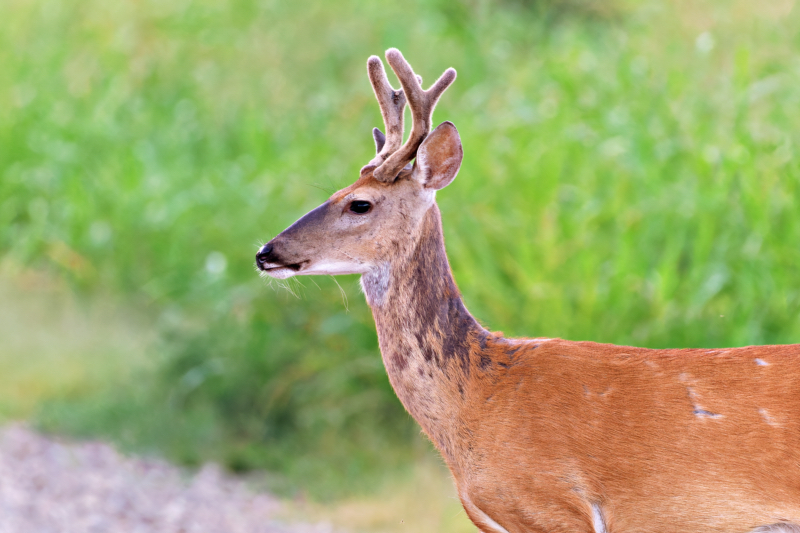As a wildlife photographer, I was on the lookout for interesting subjects to capture when I spotted this young Whitetail Buck at the Sequoyah National Wildlife Refuge in Oklahoma. I was immediately drawn to the hair loss around its neck area and wondered what could be causing this condition.

My first thought was that the Buck had mange, but upon closer inspection, I didn’t see any thickening of the skin or redness in that area, which are common symptoms of mange. I was curious to find out more and so I did some research when I got back home.
I came across several scientific studies that stated that hair loss in deer can be caused by rubbing and chewing on fur infested with lice, an infestation of muscle worms, or a faulty immune system. I also read that ticks could be a factor as well, given their high populations in the area.
In my opinion, based on my observation, I believe that the Buck was trying to remove ticks. Although I only saw one tick on its velvet antler, I could tell that the deer had other places with ticks. I know that deer lick and groom each other, especially around the neck and shoulders, and this grooming process helps remove ticks.
What do you think about this Whitetail Buck with hair loss? Leave a comment or share your thoughts on Facebook. As a wildlife photographer, I’m always curious about the stories behind the animals I capture and love to hear different perspectives.

The whitetail in Caddo County Oklahoma look like your photographed buck, only in varied degrees. I observe the local herd on an almost daily basis, mostly using game cameras located all over our 61 acre property and beyond a half mile to the Washita River area. One buck we’ve observed already looks dark gray as he’s shed most of his summer coat. Others, including four yearlings we rehabilitated a year and a half ago, have patchy areas of the winter coat emerging. One of the does looks odd sporting her winter colors on her rear end, yet still has a lot of summer red on her front area. August is a little early for this change – mostly it occurs in September. It makes me wonder if we might expect an earlier cold season or perhaps a long winter.
Thanks Lori for commenting. This does make since that this Buck could be in between its summer and winter coats. I didn’t think about this because back in 2019 it was a hot summer.